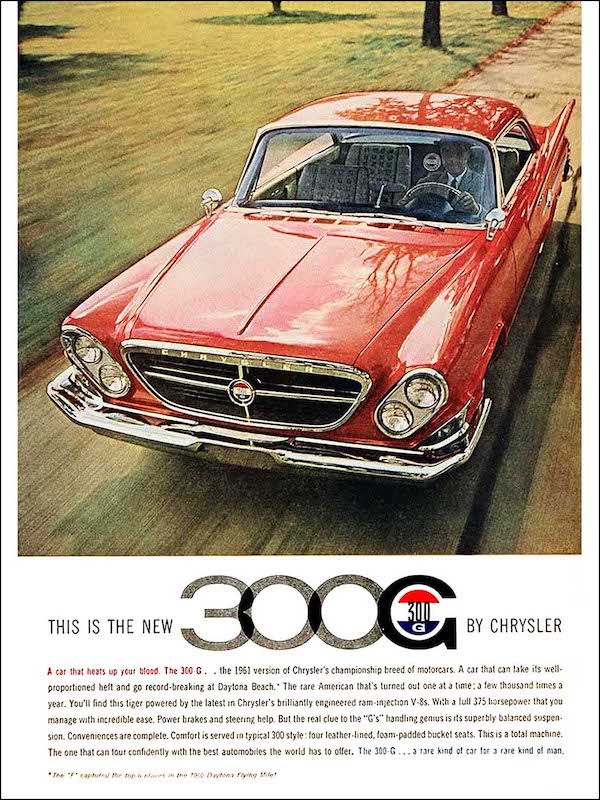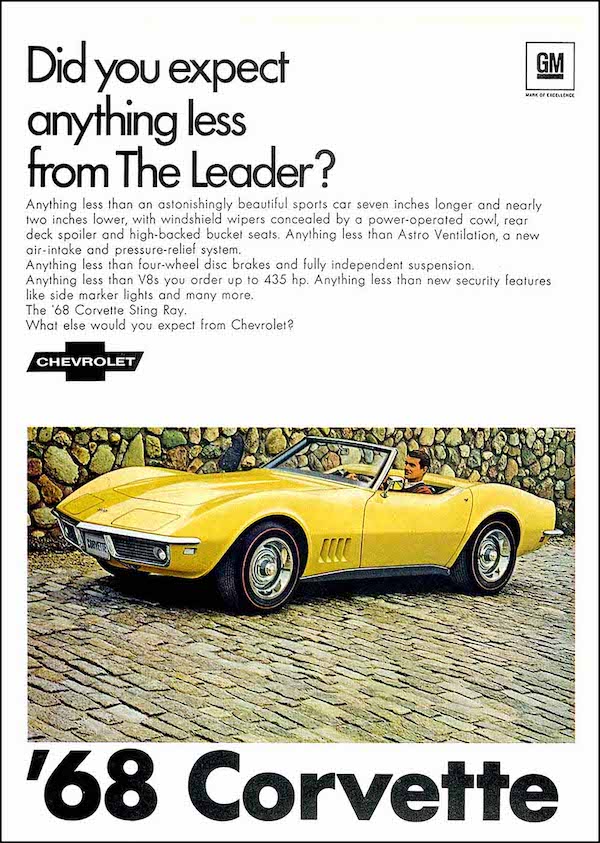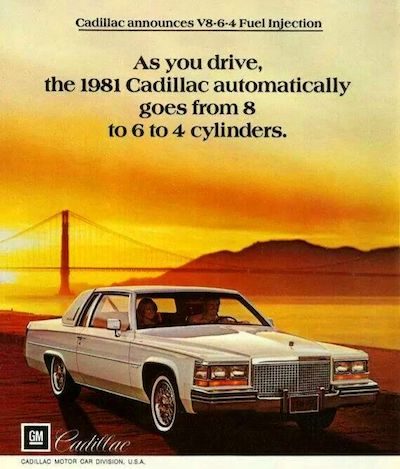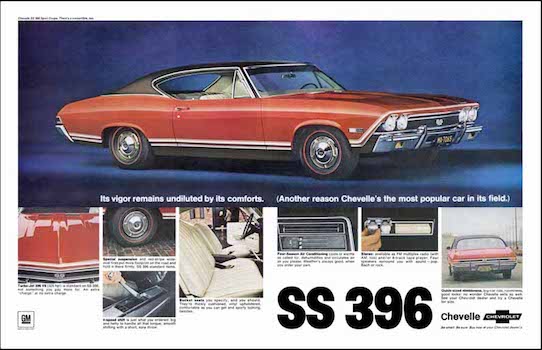We’re in the mailbox again as it’s still pretty full.
‘Really first’ ever muscle car?
Q: Okay Greg, I have read all you columns for years and I want you to nail down the first, really first, ever muscle car and why. I’ve seen you write about everything from a 1949 Olds Rocket 88 to the 1964 GTO. What do you say sir? Peter L., Wyalusing, Pa.

The 1961 Chrysler 300 with a 375-horse 413 dual quad on a long ram induction is given credit as the first true muscle car ever to hit the streets. Author Greg Zyla will explain why in an upcoming column he’s working on. (Chrysler)
A: Peter, good timing my friend. I am currently working on an article about why the 1961 Chrysler 300 is really the first of the real the muscle cars and why. It came with the large cross ram dual quad 413 and with full factory support. It then evolved into ’62 Dodge Dart Superstock 413 featured in the Beach Boys “Shutdown” hit song. Stay tuned as it’s coming up soon in a full feature.
Corvette Tri Power and L88 engines
Q: Greg, what was the difference between the Corvette Tri-Power 427 engines in 1967-68-69? Also, a friend told me that the 430-horse 427 with the single Holley 4-barrel engine was faster than the Tri-Power 435 horse 427? I’m new to car collecting and love Corvettes, but how can that be? Keith M., Providence, Rhode Island.
A: Keith the 430 horsepower 427 was indeed faster, and I mean way faster.
First, let’s discuss the Tri-Power, 3-2 barrel carburetor 427 Corvettes. There were two versions available, a 400 and a 435-horse version. The 400-horse option L68 had smaller 2.06 intake valves in the cylinder heads, 10.25 compression pistons, 2-blot mains, and a hydraulic cam. The 435-horse L71 option came with 11.0 compression pistons, 2.18-inch intake valves, solid lifter cam, and other enhancements making it a real fast car.

From 1967 to 1969, Corvette offered some serious horsepower, from the 430-horse L88 427 to the popular Tri-Power 427 that came in both 400- and 435-horsepower dress. The L88 is the rarest of the breed, and most collectable of the bunch. Shown is the 1968 all-new design roadster. (Chevrolet)
Both Tri-Powers came with cast iron heads as standard, and aluminum heads as an option. Aluminum heads didn’t increase the horsepower, but if you ever picked up a set of steel heads from a Chevy big block, you’d know the aluminum heads were worth the extra money solely by some serious weight saving numbers. (Lighter is faster).
However, it was indeed the L-88 option 430 horsepower 427-engine that was the hot ticket. It would outrun the 435 by a bunch, but very few were produced (only 20 in 1967). A total of just 216 L-88s were built in those three years, as opposed to over 15,600 Tri-Powers.
The L-88 had larger intake port aluminum cylinder heads, 12.5 compression pistons, big intake and exhaust valves, and an 850-Holley carburetor sitting on an aluminum hi-rise manifold. Big 7/16-inch bolt “dimple” rods and a higher lift solid lifter cam made it a staunch performer. The L-88 was a near $1,000 option, as opposed to only $305 and $437 for the 400 and 435, respectively.
In reality, the L-88 produced over 500 horses easy with headers, but it wasn’t as drivable on the street and fouled plugs regularly in stop and go situations. Chevy did not recommend this engine for street use. As for Trivia, all big blocks except the 454 utilized a 3.76-inch crankshaft, be it a 366, 396, 402 and 427-size, which are the four “Mark IV style big blocks produced by Chevy. The 454 used a 4.00-inch stroke crank that necessitated a specially weighted flywheel and torsional damper, and I bet many of my readers didn’t know Chevy built a 366. The “little big block” was used in heavy-duty truck and bus chassis applications.
Hope this helps and thanks for your letter.
Cadillac: big engines and the 8-6-4
Q: Greg, I am a big fan of the Cadillac and want to know about their engines and overall sizes. I know Cadillac used to build really big cars, even one with a V-16, too. Also, don’t you think Cadillac should receive credit for today’s variable firing cylinder engines, as they were the first to introduce them with the V8-6-4? Thanks, and I enjoy your column very much. Charles L. – retired in Lancaster, Pa.
A: Charles thanks much for your kind words. Cadillac’s history is loaded with lots of different engines, engine ideas, and just plain “big” tidbits.
Let’s start with the V8-6-4, which Cadillac produced from 1981 through 1984 with little success. These engines were well ahead of the curve and arrived in a 368-inch design. As highway and freeway speeds were reached, the cylinders deactivated from 8 to 6 and then to 4, which is pretty much what today’s modern marvel engines do with ease. And, “doing it with ease” is where Cadillac struggled, as this Cadillac engine was prone to problems and removed from production after a few years of trying. However, Cadillac sure did have the right idea, they just couldn’t perfect it 40 years ago. As we arrive at 2023, Cadillac has everything worked out, as does every other car manufacturer.
As for Cadillac engines, the largest Cadillac engine ever, a 500-cubic inch V8, debuted in 1970 in the Eldorado, with 472-inchers available in the Deville models and Fleetwoods from 1968 through 1974. Then in 1975 and 1976, the Cadillac Deville and Fleetwoods came with these 500-inch V8s as standard equipment. I was a proud owner of two Cadillac’s in my lifetime, a 1972 Sedan Deville and a 1975 Coupe Deville.

Back in 1981, Cadillac introduced the first ever V8-6-4 cylinder deactivation engine. Although plagued with problems and then dropped from production after 1984, Cadillac was way ahead of the curve and today cylinder deactivation is used by most all manufacturers and perfected beyond belief. (Cadillac)
As most know, Cadillac has always been a truly innovative company, as I’ve only addressed V8 engines to this point. However, in 1930, Cadillac offered a 353-inch V8, a 368-inch V12, and a 452-inch V16. In 1936, two new V8s joined the V12 and V16, in 322 and 346-inch designs. Then in 1937, only one V8, the 346, was available, as were the larger V12 and V16 engines. In 1938, Cadillac dropped the V12 and reduced the V16 to 431-inches. The V16 lasted through 1939, and was then replaced by V8 engines from there on.
As for wheelbase, those 1975 and 1976 500-inch V8 models carried the same 130-inch wheelbase that first appeared back in 1959. However, the longest wheelbase standard Cadillac, (not limo or stretched Fleetwoods or Sixty Specials) was the 1930 Cadillac, which was built on a 140-inch wheelbase that to this day remains the longest standard size Cadillac ever built.
Hope this all helps, and thanks for the nice comments.
Rare Chevelles of the 1960s
Q: Greg, after reading your columns about the rare 1965 Chevelle SS 396, can you tell me how many 1968 Chevelles were produced, and how many were Super Sports and convertibles? Which one is most valuable? Thanks, Jimmy S., Owego, N.Y.
A: Glad to help Jimmy. In 1968, 266,300 Chevelle Malibus were produced in all fashions, and another 45,500 Chevelle wagons were also built. As for the SS 396 models, which are not included in the above figures, 60,499 Hardtop Coupes were delivered while only 2,286 SS 396 Convertibles were built. Therefore, when you add all this up, out of a total of 329,085 Malibu and Super Sports built, less than one-percent (.069) were convertibles.
Also, over 54,000 additional Chevelle 300 models were built in 1968, making that SS convertible even rarer. In 1966, the SS convertible numbered 2,984, and in 1967 it was 3,033. Thus, the 1968 SS Convertible is the rarest of the 66-67-68 Chevelles, and the most valuable of the bunch would be a 396-375 horsepower version, which came with a solid lifter cam, bigger heads and Holley 800 carburetor on an aluminum intake. I had one in a 1968 Camaro, and it was a really fast car.
As for pricing, the market is up and down, but I’ll bet a car like this in pristine condition at an auction like Mecum would easily do near $85,000 or even more. Always remember, however, that pricing you see in guides or even at a respected auction like Mecum Auto Auctions are not always indicative of what you might get a month from now.
(Greg Zyla is a syndicated auto columnist who welcomes reader questions or comments on collector cars, auto nostalgia or motorsports at greg@gregzyla.com.)



Be the first to comment on "Collector Car Corner / Cars We Remember"